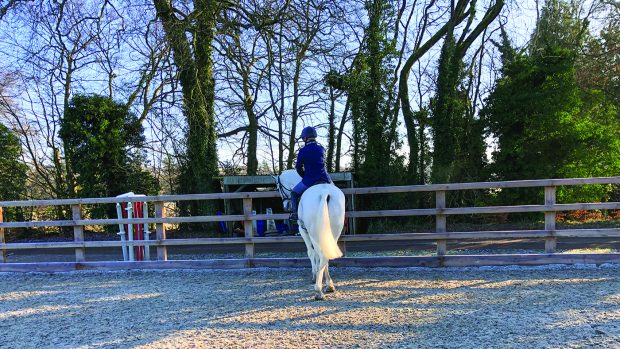MARIA Eilberg was triumphant at the Blue Waters National Dressage Championships (13-16 September) in the grand prix kür on Two Sox. But how easy is it to produce your own freestyle?
WHETHER you are aiming for the national championships or just want to add another dimension to your training, dressage freestyles — or kürs — can be lots of fun. Freestyles are judged both on technical and artistic marks. The rider must include all the compulsory movements at his level of competition, and may also incorporate other non-compulsory movements of a lower level. Check with British Dressage (BD) on the amount of time you will have for your test, as it varies for each level.
Riders’ top tips
ANDREW Gould, intermediaire I freestyle winter champion 2006, uses music from films that he likes, such as Gladiator and Rocky.
“I listen to music in the car while on the road teaching and get lots of ideas,” he says.
“A friend does my music for me — she assesses the horse’s paces with a metronome, videos me doing the test pattern I’ve worked out and then fits my music to it. You can make a test as technical or easy as you like, depending on the horse’s ability and how established he is at that level.”
Simone Ward, who was eighth in the national intermediaire I freestyle, uses the floor pattern as a start point.
“By recognising your horse’s strengths and weaknesses, you can give the judges the best possible impression of the required elements,” she says.
“With some clever choreography, you can also disguise some less impressive movements. I like uptempo music that builds and falls — this accentuates specific movements and gives the rider a checkpoint to ensure they’re not ahead of or behind their music.”
Becky Moody starts off by videoing her horse in each pace.
“I then watch the video and play loads of music at the same time to get a rough idea of what suits the horse. I look for music that might help emphasise the horse’s good points and express his character,” she says.
“When I’ve narrowed it down to a few choices for each pace, I ride the horse to the music and my family watches, to help choose the right pieces.
“I have a computer programme that enables me to speed up and slow down the music. I then design my floor plan, video myself riding it, and finally put the music together.”
Keeping it legal
A digital metronome, available online and from music stores, can be slipped into your pocket as you rehearse riding to your music for a rough guide. The average beats per minute in trot are around 150, 96 in canter and 108 in walk.
Play it safe when obtaining your music, so you don’t violate copyright laws — “normal” music CDs are licensed for domestic purposes only. BD has acquired a licence agreement with Phonographic Performance Limited and can supply details of the agreement. BD also offers a “music membership”, whereby competitors register their music on a music licence record form.
Visit www.britishdressage.co.uk for further info.
If you want professional assistance for your musical production, search online or in the phone book for dressage to music producers. There are also CDs available with music written specifically for horses, such as Rasmusic’s range of original tunes.
Check out Dancing With Your Horse by Libby Anderson and Leigh Ann Hazel-Groux (Half Halt Press) or ask BD for Jane Kidd’s Dressage to Music booklet.
This Q&A was first published in Horse & Hound (27 September, ’07)



